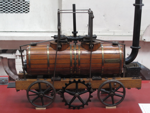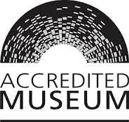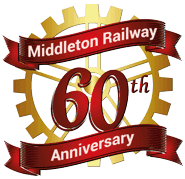Steam locomotives, which are powered by burning coal to produce steam in the boiler, are the oldest form of locomotive technology. They provided the main power sources for railways up until the 1960s, and the collection here illustrates many of the key features of steam locomotives that were used on industrial railways.
Each steam locomotive in our collection has what we call a 'Middleton number', which isn't shown on the locomotive, but it is used in fleet lists and on the display panels in the Engine House to identify the locomotives. In the list below this number is shown in square brackets.
The locomotives themselves are identified by the name of the builder and the 'works number' which the builder allocated to it when they built it. In addition, many of these locomotives carry what are usually called 'running numbers', and these are given here in single quotes, while others carry names, and these are given here in double quotes. Unlike main line locomotives, however, very few industrial locomotives carried both running numbers and names, although often the running numbers did also include the name of the company that owned the locomotive.
Most of the information given on the pages for each locomotive should be self-explanatory, but you may wonder about the meaning of a description such as "0-6-0ST". The first part of this is the arrangement of the wheels, where the first digit is the number of carrying wheels at the front (usually 0 for our locomotives), the second digit is the number of driving wheels, and the third digit is the number of carrying wheels at the back (again, usually 0 for our locomotives).
Then, the letters after these digits mainly indicate how the locomotive's water is carried: ST stands for Saddle Tank (ie over the top of the boiler); T stands for side Tank (ie alongside the boiler); and WT for Well Tank (ie underneath the boiler, between the frames). The other letters that may appear are VB, which stands for Vertical Boiler, or G, which stands for Geared (meaning that the pistons drive the wheels through gears rather than directly).
The following steam locomotives are in our collection.
- [S1] Sentinel 8837 '68153';
- [S3] North Eastern Railway '1310';
- [S5] Hudswell-Clarke 1309 "Henry De Lacy II";
- [S6] Hawthorn Leslie 3860 'No. 6';
- [S7] Hartmann 2110 'Hs 385';
- [S8] Peckett 2003 "John Blenkinsop";
- [S9] Manning Wardle 1601 "Matthew Murray";
- [S10] Hudswell-Clarke 1882 "Mirvale";
- [S11] Peckett 2103;
- [S13] Hunslet 2387 'Brookes No. 1';
- [S14] Manning Wardle 1210 "Sir Berkeley";
- [S15] Kitson 5469 '44', "Conway";
- [S16] Hunslet 1540 "Picton";
- [S17] Hunslet 1684 "Mendip Collier";
- [S19] Hunslet 1493 'No. 11';
- [S20] Hudswell-Clarke 1369 'M. S. C. No. 67';
- [S21] Hudswell-Clarke 1544 'Slough Estates No. 3'
The pages for these locomotives give a brief overview of our collection, but for more information about each one our stock book is available in the shop. Click here for more details of this.
Return to the page for our museum collection.
More Information
Pages about other categories of museum exhibits:
Other pages provide more information about:








